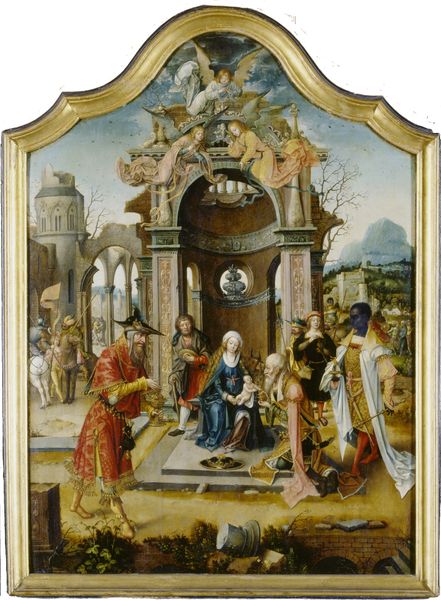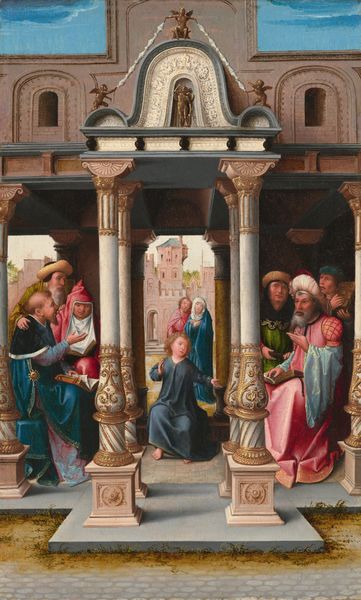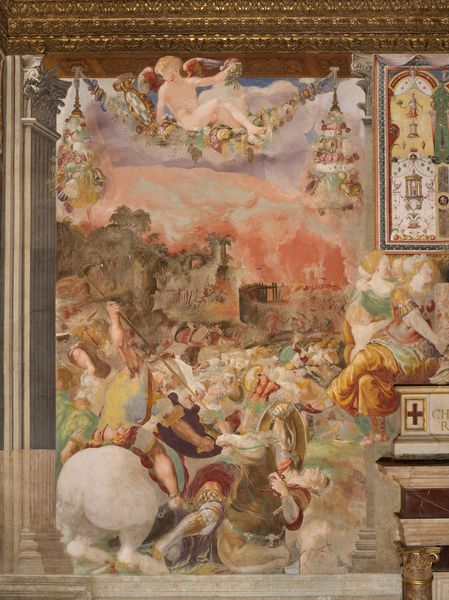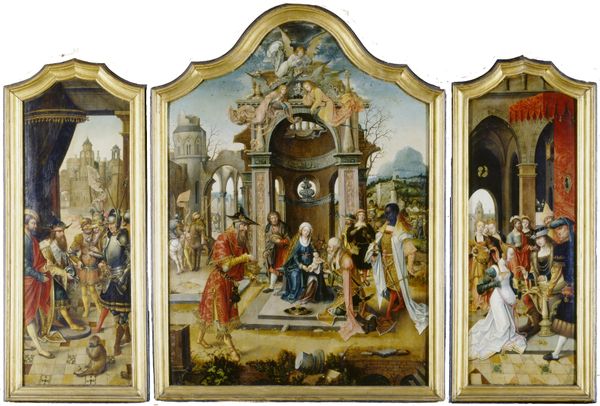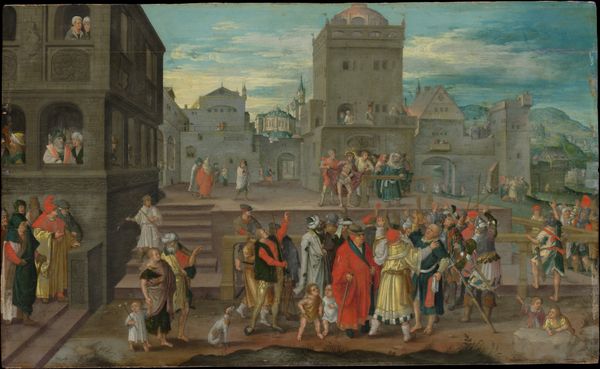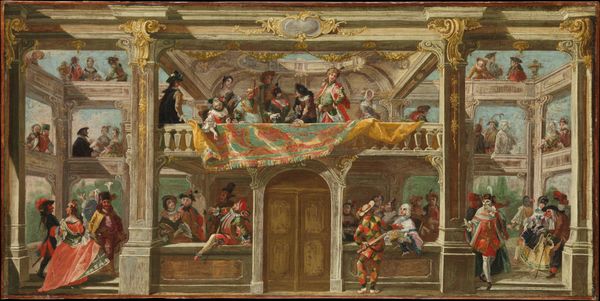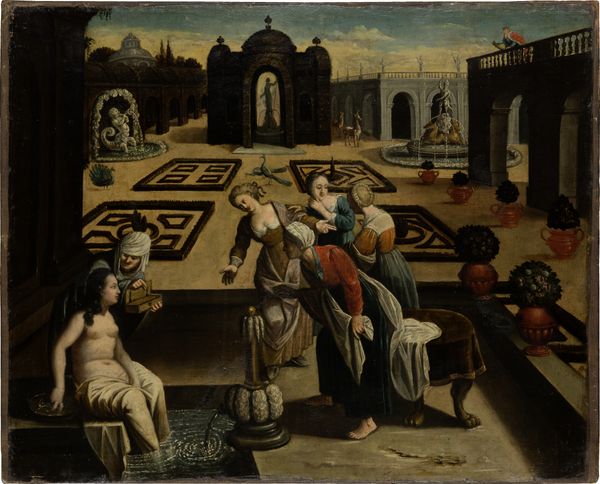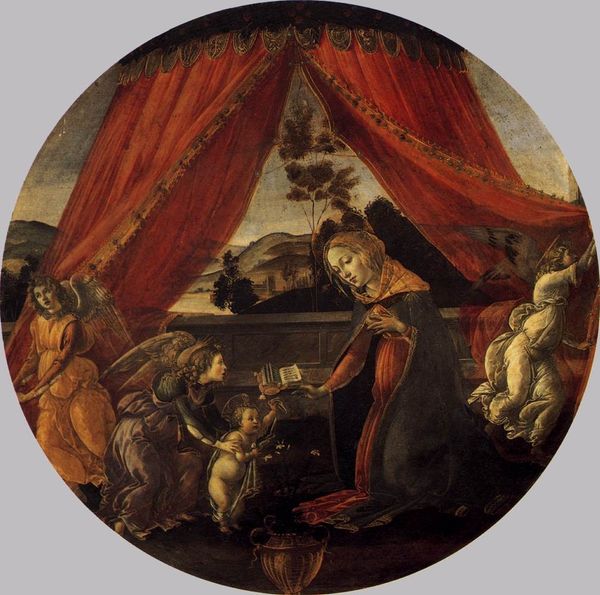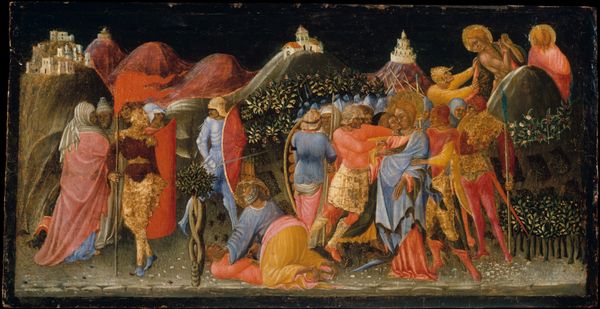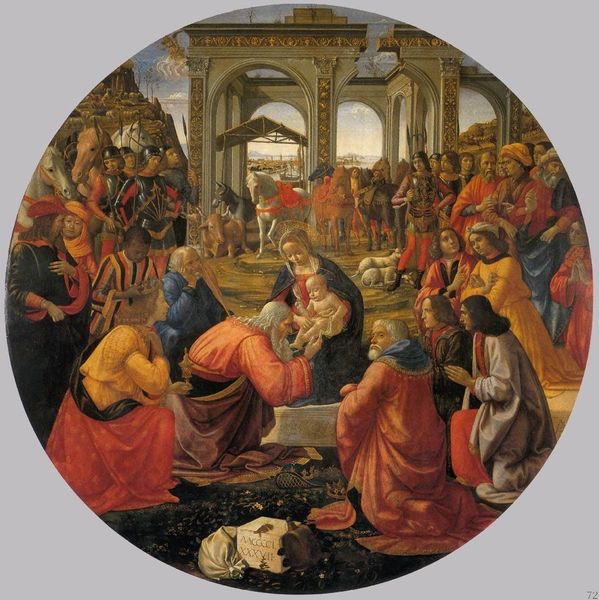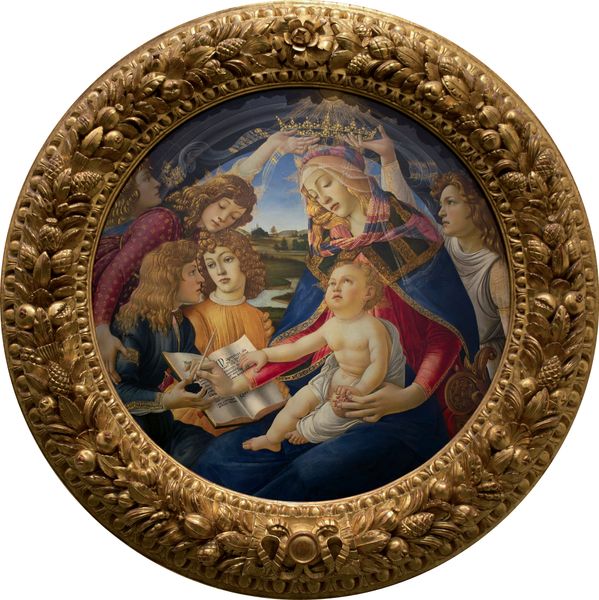
tempera, painting, architecture
#
allegory
#
tempera
#
painting
#
landscape
#
figuration
#
history-painting
#
italian-renaissance
#
architecture
Dimensions: Diameter: 104.2 cm (41 in.)
Copyright: Public Domain
Editor: So this is Raffaello Botticini's "The Adoration of the Magi," a tempera painting from around 1495. The figures feel a little bit stiff to me, but I love the landscape in the background and all the detail in the architecture. What do you see in this piece? Curator: I see a fascinating collision of the sacred and the socio-political. Botticini situates this pivotal religious scene, the recognition of Christ's divinity, within a complex architectural space, which looks both grand and incomplete, drawing clear lines of connection with social constructions. How does the ruinous temple interact with the theme of adoration for you? Editor: I hadn't thought about the architecture as a ruin, just a building. But that changes the feeling quite a bit. Is Botticini maybe suggesting something about the state of religion or society at the time? Curator: Precisely! Renaissance art often used biblical narratives to comment on contemporary society. The crumbling temple, contrasted with the vibrant scene of the Magi offering gifts, can be interpreted as a critique of established power structures giving way to new ideologies, but also drawing parallels to the ruin of classical societies. This work could invite us to question: who is really being "adored" here, and what does it cost those not represented in this painting? Editor: That's a powerful interpretation. The details, like the peacock on the building and the ship at the harbor, make a lot more sense to me now too, pointing to different locations, people, or social themes that could have social implications in the Italian Renaissance. Curator: Exactly, they amplify that intersectional tension. They encourage a critical engagement with the painting, acknowledging the complexities of faith, power, and representation in 15th-century Italy. Editor: Thanks. I'll never look at Renaissance art the same way again. Curator: And I'm glad for it, since this kind of approach gives this and many other artworks from the Italian Renaissance contemporary relevance, creating conversation between distinct identities of power and disenfranchisement.
Comments
No comments
Be the first to comment and join the conversation on the ultimate creative platform.
